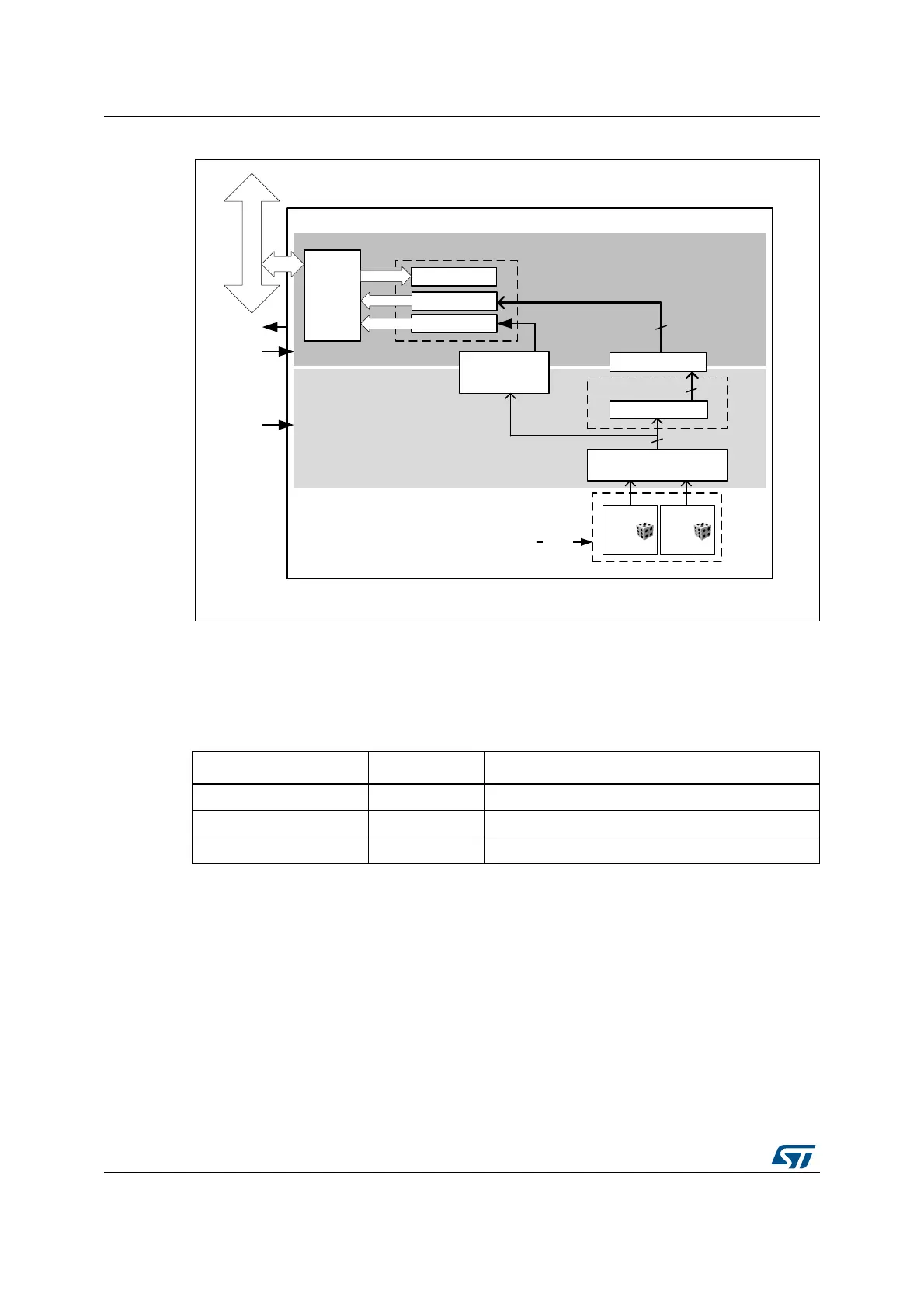True Random Number Generator (RNG) RM0351
808/1830 DocID024597 Rev 5
Figure 188. RNG block diagram
27.3.2 RNG internal signals
Table 172 describes a list of useful-to-know internal signals available at the RNG level, not
at the STM32 product level (on pads).
27.3.3 Random number generation
The true random number generator (RNG) delivers truly random data through its AHB
interface at deterministic intervals. The RNG implements the entropy source model pictured
on Figure 189, and provides three main functions to the application:
• Collects the bitstring output of the entropy source box
• Obtains samples of the noise source for validation purpose
• Collects error messages from continuous health tests
06Y9
751*Y
51*B65
$+%
LQWHUIDFH
VWDWXV
51*B&5
$QDORJ
QRLVH
VRXUFH
%DQNHG5HJLVWHUV
6DPSOLQJ
1RUPDOL]DWLRQ[
$QDORJQRLVHVRXUFH
ELW
$QDORJ
QRLVH
VRXUFH
HQBRVF
ELW$+%%XV
UQJBLW
UQJBKFON
UQJBFON
$+%FORFNGRPDLQ
51*FORFNGRPDLQ
'DWDVKLIWUHJ
ELW
ELW/)65[
3RVWSURFHVVLQJORJLF
ELW
)DXOWGHWHFWLRQ
&ORFNFKHFNHU
$ODUPV
51*B'5
GDWD
FRQWURO
Table 172. RNG internal input/output signals
Signal name Signal type Description
rng_it digital output RNG global interrupt request
rng_hclk digital input AHB clock
rng_clk digital input RNG dedicated clock, asynchronous to rng_hclk

